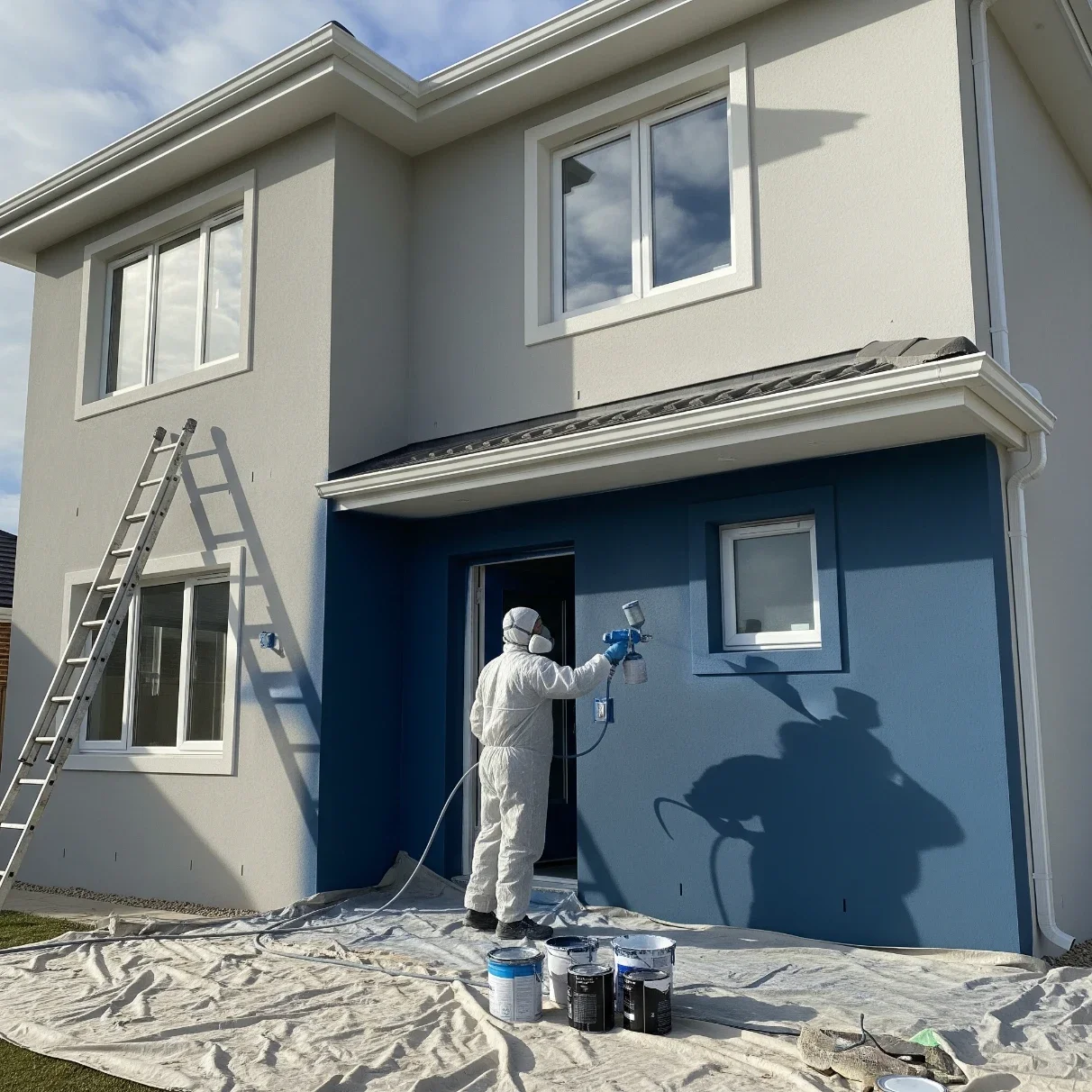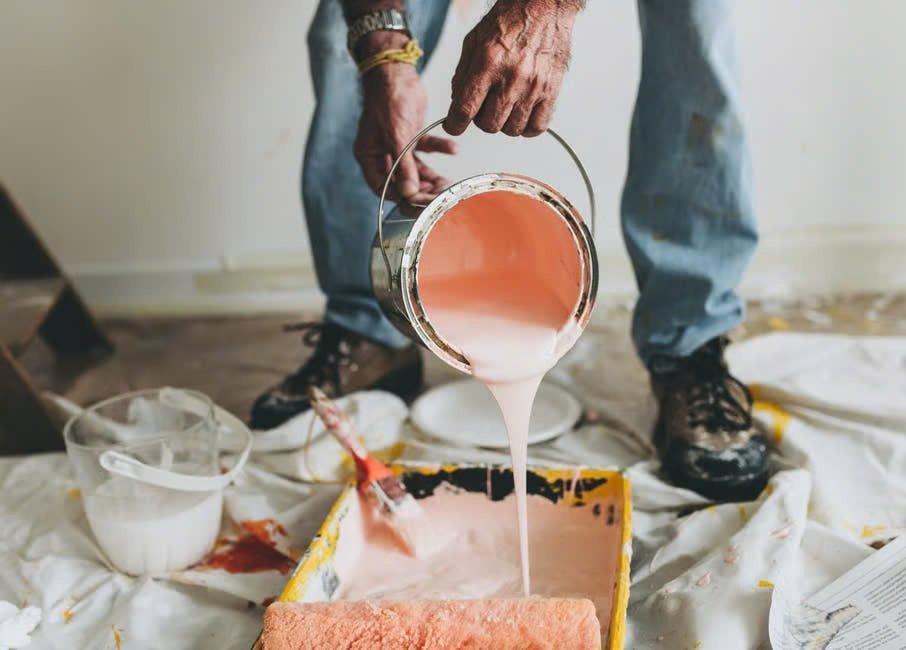Painting Your House? Here Are Painting Rules You Should Never Go Against
Planning to paint your house? Follow these essential painting rules to achieve a flawless finish and long-lasting results, avoiding common mistakes.
There is no denying that a fresh coat of paint can significantly change the look of your home. While this is the case, you need to ensure that you follow the due process. If you want excellent results, here are painting rules you should never go against:
Always use high-quality materials
For an excellent outcome, you should be ready to pay for high-quality paint, primer, and caulking compound. Always remember that top-quality paint lasts longer, flows, and covers better than low-quality paint. To stay on the safe side, buy paint that comes with a lifetime warranty against finish faults.
Most home paint gives you what you pay for, and the greatest ingredients are pricey. This means if you want high-quality paint, you should be ready to pay for it.
It’s easy to be tempted to go for cheap paint as you feel that it looks as good as the premium one. While it might seem like this is the case, consider how long the paint will last before you need to repaint the house. A high-quality product will keep you from painting again for several years.
Which, as you can tell, saves you time and money.
High-grade paints and primers will be costly, but the quality and years of service will be far superior to most less expensive paints.
So, for your house to look good for a long time, save money and time, always go for high-quality paints.
Properly prepare the surfaces for painting.
To adhere properly, you must apply paint to a clean, dry surface that is not flaking or peeling. Depending on the quality of the old siding and trim, you may need to do a lot of scraping and sanding before painting.
Start by cleaning the surfaces. You can use a pressure washer or a hose and scrub brush with water and detergent. If you use a pressure washer, take care not to force water deeply into the siding joints or damage the wood's surface with the high-pressure water spray.
Use a scraper to remove loose, flaking paint. Then, to remove harder paint and smooth the surface, use a 5-inch disc power sander or a random-orbit sander. Start with 60-grit sandpaper, and then go to 100-grit sandpaper.
The goal is not to remove all of the paint but to remove any loose paint and leave the surface smooth.
You should use a putty knife and wood filler to fix cracks and holes. Allow the filler to cure completely before sanding these areas again. Brush off all dust, caulk the joints, and let it dry before applying primer.
You can prepare the surfaces yourself, but if you don’t have the time or the right tools, hire a painting professional, such as All Star Painter.
Take care to protect what you aren’t painting.
Before you begin painting, you must either move or cover any furniture, plants, or other items that are near the surface you wish to paint.
You should note that sprays and splatters will always land on surfaces you did not plan to paint as you work your way around the surface.
If you don’t want the sprays to land on these surfaces and ruin them, cover them before you start the painting. It would be even better if you could take them outside so that you have a larger space to work on.
Don’t cut corners
There is no space for shortcuts if you want your house to be as magnificent as it was before or as you envisage it. This calls for you to apply all of the paint coats required to get the desired finish.
If you're painting over bare metal or wood, you'll need to prep the surface with a high-quality primer.
You might come across information that you don’t need to do a certain task, and the outcome will be just as good, but this isn’t the case. Always remember that the more you cut corners, the higher the chances of the painting turning out low quality, which increases the chances of it coming out after a few years.
Be cautious of the weather.
If this is the first time you are painting, you should know that the different weather elements have an impact on how well your paint ages and how long it will endure before wear and tear, and need a fresh coat.
They also determine when you should paint to achieve the best results.
Remember that the paint you're applying is simply a chemical mixture. Temperature has some effect on all elements. When the temperature is too hot, or you're painting in full sunshine, the paint dries too fast. Painting when it is too chilly, on the other hand, causes the paint to not cling correctly to the surface.
The best time to repaint the house is when the temperature is between 50 and 90 degrees. You should do the painting when you aren’t expecting any precipitation. This is because painting on a damp or dewy surface causes the coat to bubble. And you don’t want this, do you?
Do your homework
If you are new to painting, you shouldn’t go at it blindly. You need to ensure that you have the right information.
Thankfully, there is plenty of information you can use to your advantage. You can find a wealth of free information online, including expert-created videos that break down the different techniques you can use to do the painting.
Work from the top down, beginning with overhangs to prevent fresh paint from dripping onto recently painted surfaces.
Once the siding has dried, tape around the windows and doors and paint the trim, when you're finished painting the trim, remove the painter's tape to avoid leaving residue.
After the paint has dried, touch up any areas where it hasn't completely covered the surface.
Parting shot
These are some of the panting rules you should follow for you to get excellent results. As mentioned, you can do the painting yourself if you have the skills, but if you have never done it before, let a professional help you out.
When hiring a professional, don’t hire just any. Take your time to research and find an experienced one who knows what they are doing. The last thing you want is to hire someone who will botch your beloved house.














